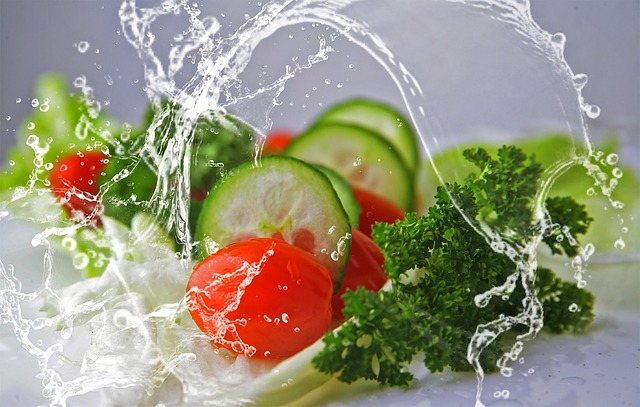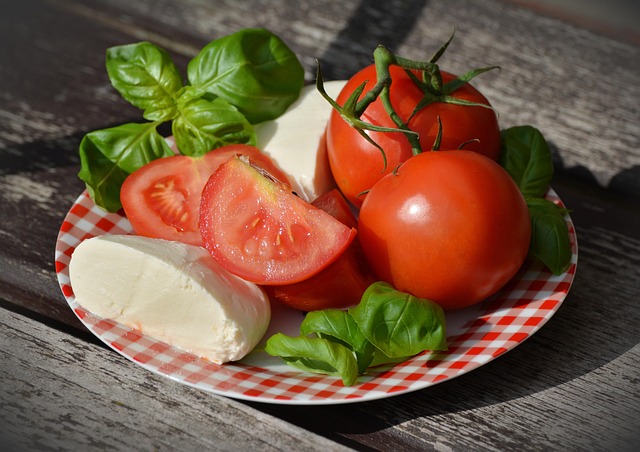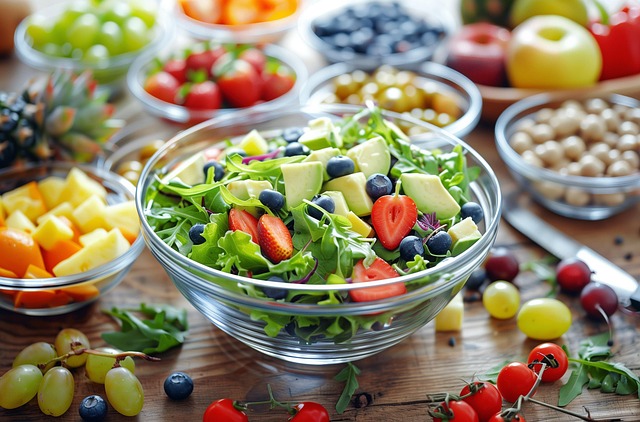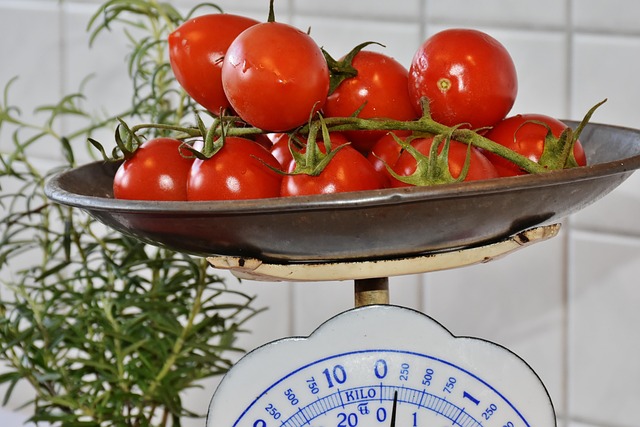
Salads and Their Popularity
Salads have been touted as the ultimate healthy meal for years. If you’re dieting, into clean eating, or just looking to add more veggies to your plate, salads are usually the obvious choice. But how many times do we really take a step back and think about what we’re actually consuming? The reality is, calories on salad can be wildly different depending on ingredients, dressings, and serving size.
As per recent consumer trends, salad consumption has skyrocketed owing to heightened health awareness and the growth of plant-based eating. Yet, the belief that all salads are low-calorie is misplaced. This blog seeks to dispel what goes into the salad calories, enabling you to make better, wiser dietary decisions.
What Makes a Salad Healthy?

The Essentials of a Healthy Salad
By its very nature, a salad is a combination of foods, usually raw or slightly cooked vegetables. But a healthy salad is not merely lettuce thrown into a bowl. It’s a colorful combination of whole-food ingredients that will energize your body.
Variety is Vital
Vibrant, textured, and varied salads tend to be the healthiest. Varying colors in vegetables represent a range of vitamins, minerals, and antioxidants. Consider red tomatoes (lycopene), orange carrots (beta-carotene), and dark leafy greens (iron and calcium).
Nutrient-Dense vs. Empty Calories
A nutritious salad is all about nutrient-rich ingredients—high-nutrient, low-calorie foods. Don’t drench your greens in calorie-packed croutons, fried meats, and sweet dressings. They can add stealth calories on salad, making a light meal become a calorie bomb.
Analysis of Typical Salad Ingredients
Leafy Greens: The Base
- Spinach (7 cal/cup): High in iron, folate, and fiber.
- Kale (33 cal/cup): Packed with antioxidants, calcium, and vitamin K.
- Romaine (8 cal/cup): Low in calories and hydrating.
Leafy greens contribute the least to calories on salad, making them a great base.
Vegetables: Low-Calorie Powerhouses
- Cucumber (16 cal/cup): Water-rich, excellent for hydration.
- Bell Peppers (40 cal/cup): Packed with vitamin C.
- Tomatoes (22 cal/cup): Excellent for heart health.
Raw vegetables are your closest allies when it comes to controlling calories. They bring bulk and crunch without having much impact on overall calorie value.
Proteins: A Calorie Game-Changer
- Grilled Chicken (165 cal/3 oz): Filling and lean.
- Tofu (94 cal/3 oz): Vegetarian, high in protein and iron.
- Beans (110-130 cal/½ cup): High in fiber, filling.
Proteins contribute greatly to fullness, but can really increase calories on salad if controlled portions are not followed.
The Impact of Dressings on Caloric Intake
Popular Dressings and Their Calorie Counts
- Ranch (145 cal/2 tbsp)
- Caesar (150 cal/2 tbsp)
- Italian Vinaigrette (80 cal/2 tbsp)
- Balsamic Vinegar (14 cal/2 tbsp)
Dressings are often the most calorie-dense component of a salad. Creamy versions typically contain oils, sugar, and dairy, contributing significantly to total intake.
Serving Sizes Matter
Most individuals drown their greens in dressing, readily doubling or tripling the stated serving size. Use 2 tablespoons or less, or employ the “fork-dip” technique to limit calorie loading.
DIY Healthier Dressings
Make your own dressings using straightforward, whole foods such as:
- Olive oil and lemon juice
- Greek yogurt and fresh herbs
- Balsamic vinegar and mustard
Homemade versions can significantly reduce the calories on salad and remove preservatives.
Caloric Differences Between Types of Salads
Green Salads vs. Pasta and Potato Salads
- Green Salad (100–300 cal/serving): Varies with toppings.
- Pasta Salad (350–600 cal/serving): Tends to be high in refined carbs and oils.
- Potato Salad (400–700 cal/serving): Typically mayo-based.
The base is a gigantic factor. Salads based on starchy foods tend to have more hidden calories than salads made with leafy greens.
Grain Additions and Their Impact
Including grains such as quinoa (222 cal/cup) or brown rice (215 cal/cup) increases fiber and nutrients—but calories too. Moderation is the key.
The Sweet Touch: Fruits in Salads

- Apples (57 cal/half), Grapes (62 cal/½ cup), and Dried cranberries (123 cal/¼ cup) can add flavor and calories too.
Though fresh fruits are healthy, dried fruits and candied nuts lead to sugar spikes and calories on salad.
Portion Sizes and Their Function in Caloric Intake
Too Much Is Too Much?
Part of the most under-regulated aspect of calorie management is portion size. Even nutritious salads can be calorie-rich with huge portions.
Visual Portion Control Cues
- A portion of dressing = 2 tbsp = ping-pong ball
- A portion of cheese = 1 oz = four dice
- Protein serving = 3 oz = deck of cards
Mindful Eating for Better Choices
Slowing down, enjoying flavors, and paying attention to your body’s hunger signals can lead to natural regulation of intake.
Creating a Low-Calorie Salad
Tips for a Guilt-Free Bowl
- Begin with dark leafy greens.
- Pile on raw vegetables.
- Include lean protein in small portions.
- Choose vinegar-based dressing or lemon juice.
- Stay away from fried toppings, creamy dressings, and too much cheese.
Smart Substitutions
- Croutons → Roasted chickpeas or seeds
- Bacon bits → Sun-dried tomatoes
- Cheese → Nutritional yeast for cheesy flavor minus the fat
Low-Calorie, High-Bulk Ingredients
- Zucchini noodles
- Shredded cabbage
- Water-packed veggies like celery and cucumber
These make your salad satisfying without loading it with calories.
The Concept of Salad as a Meal
When Salads Become Complete Meals
A meal salad must contain all macronutrients: carbohydrates, proteins, and fats. Consider a Mediterranean quinoa salad or a grilled chicken Cobb.
Balancing Nutrition and Satiety
Utilize complex carbs such as lentils or barley, lean proteins, and healthy fats such as avocado or nuts. Opt for 400–600 calories for a well-balanced meal.
Meal Salad Examples (with Calorie Counts)
- Grilled Chicken Caesar (without croutons) – 450 cal
- Southwest Black Bean Salad with Avocado – 500 cal
- Asian Sesame Tofu Salad – 420 cal
These dishes are filling and nutritious, showing that the proper calories on salad can keep you satisfied and energized.
Debunking Myths About Calories in Salad
Myth 1: All Salads Are Healthy
Not true. A fried chicken salad, cheese salad, or creamy dressing salad can easily have more than 800–1000 calories.
Myth 2: Calories on Salad Don’t Matter
They sure do. A salad with greens, ranch, bacon, cheese, and croutons could contain as many calories as a fast food burger.
Myth 3: More Toppings = More Nutrition
Balance is all. Piling on your salad can result in added fats and sugars that devalue its health benefits.
Mindfulness and Awareness Are Key
Reading labels, monitoring servings, and knowing ingredients are key tools in controlling your salad’s nutritional effect.
Conclusion: Making Informed Salad Choices

Salads are very versatile, health-packed meals-when made with thought. To summarize:
- Select nutrient-dense, whole-food ingredients.
- Keep the calories on salad in mind, particularly from dressings and toppings.
- Watch portion sizes and create well-rounded meals.
- Be not so sure all salads are low in calories-read the ingredients.
With a little creativity and knowledge, you can have tasty salads that enhance your health objectives and satisfy your taste buds.
Final Tips:
- Plan your salad like a full meal.
- Keep healthy dressings on hand.
- Use measuring tools to stay portion-aware.
- Track calories if you’re working toward specific goals.
A smart approach to calories on salad turns this classic dish into a powerhouse of nutrition, flavor, and satisfaction.
